The word dinosaur comes from the Greek meaning “terrible lizard.” But dinosaurs aren’t terrible; they are fascinating! Find out why with these dinosaur facts for kids.
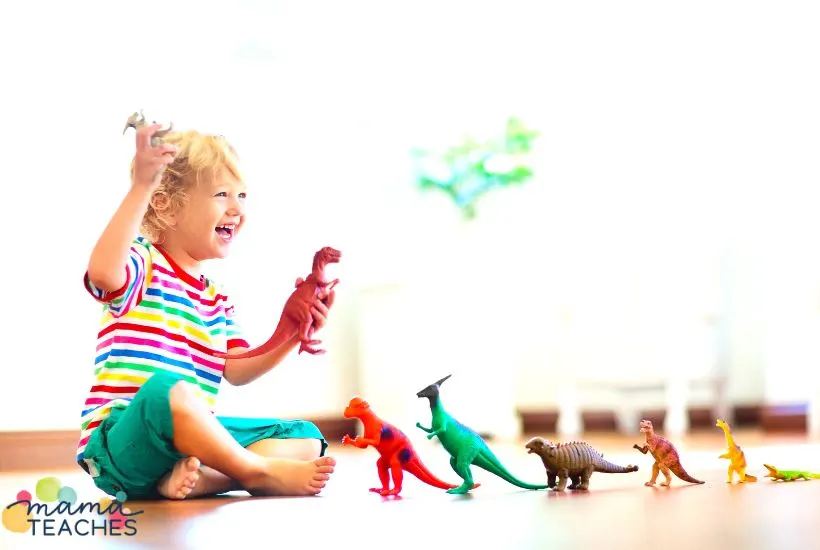
Fun Facts About Dinosaurs
Are you interested in dinosaurs? Find out some fantastic dinosaur trivia with these dinosaur facts for kids.
And then try your hand at some dinosaur word search puzzles too!
1. The Footprint Tells You Lots About the Dinosaur Who Made It
If paleontologists find a fossilized dinosaur footprint, they can figure out a lot about the dinosaur.
If you multiply the footprint length by 4, you can roughly determine the leg length of the dinosaur. That tells you its height.
If the footprint has three pointy claw marks, it belonged to a theropod (a meat-eater like the Spinosaurus or Tyrannosaurus).
If it has three rounded toes, it was likely from an ornithopod (a plant-eater like the Iguanodon that walked on two feet).
Sometimes paleontologists see footprints in pairs. If the pairs are the same type but different sizes, that indicates a sauropod (long-necked plant-eaters like Diplodocus).

This article contains affiliate links to things that you might like.
2. Long-necked Dinosaurs Ate Rocks
Sauropods, the long-necked dinosaurs like Diplodocus and Brachiosaurus, had long teeth resembling pegs or chopsticks.
They used their long, thin teeth like a rake to scrape the leaves off trees.
Their teeth weren’t practical for chewing, so these animals swallowed the leaves whole.
To grind the leaves for digestion, sauropods swallowed small stones.
These stones (called gastroliths) tumbled around inside the dinosaur’s stomach, crushing the leaves so they could be adequately digested.
How do scientists know this information? You guessed it! They examined fossilized sauropod poop and found the stones!
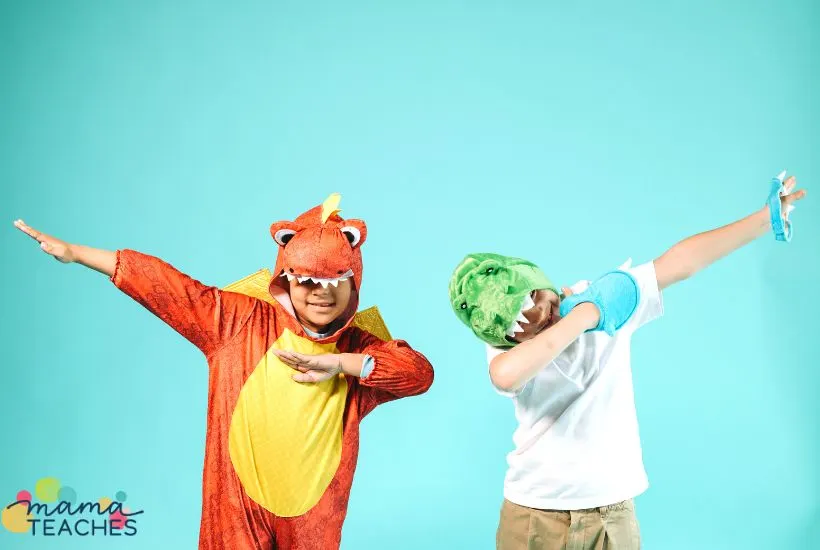
3. Dinosaurs Were Everywhere on Earth
Dinosaur fossils have been discovered in all seven continents of the earth–even Antarctica!
Most dinosaurs lived along rivers and streams. Like animals today, they needed a source of fresh water.
Some dinosaurs, like the Baryonyx, may have been able to swim!
Evidence suggests that some dinosaurs lived in the desert, like the Oviraptor.
Did dinosaurs live in the mountains? That’s difficult to say.
Very few dinosaur fossils have been found in mountainous areas.
This could be explained by the fact that there is the constant erosion of mountains by wind and water, so fossilized remains would be broken apart and scattered.
Or it could be that dinosaurs did not live in the mountains. It’s a mystery!
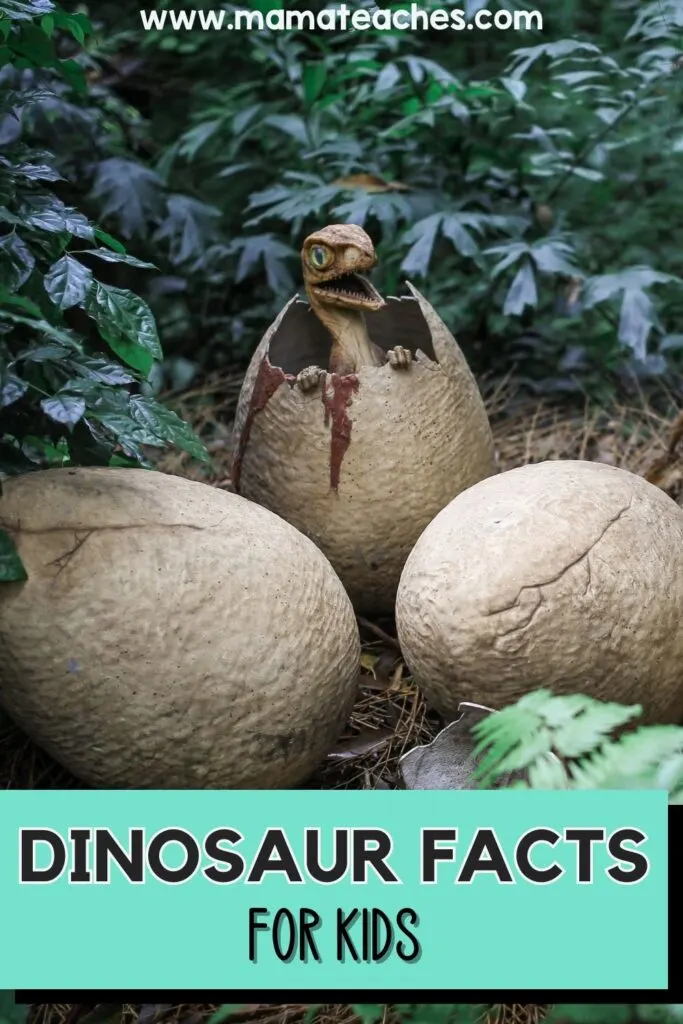
4. If You Call Someone “Dino,” That’s an Insult
The word dinosaur was first invented by the director of the London History Museum in the 1840s, Richard Owen.
He chose the word dinosaur because of its Greek roots.
Dino comes from the Greek word deino, meaning “terrible.”
Saur comes from the Greek word sauros, meaning “lizard.”
Here are some other meanings of dinosaur names. They all come from the Greek and Latin languages.
Scientists chose these names to describe a particular feature or behavior of the dinosaur.
- Triceratops: Three-horned face
- Brachiosaurus: Arm lizard (its front legs were longer than its back legs)
- Tyrannosaurus rex: King of the tyrant lizards
- Ankylosaurus: Stiff lizard (it was covered with armored plates)
- Compsognathus: Elegant or dainty jaw (it was once the smallest known dinosaur)
- Stegosaurus: Roof lizard (paleontologists initially thought its plates laid flat on its back like shingles)
- Pachycephalosaurus: Thick-headed lizard (it has a high, dome-like skull)
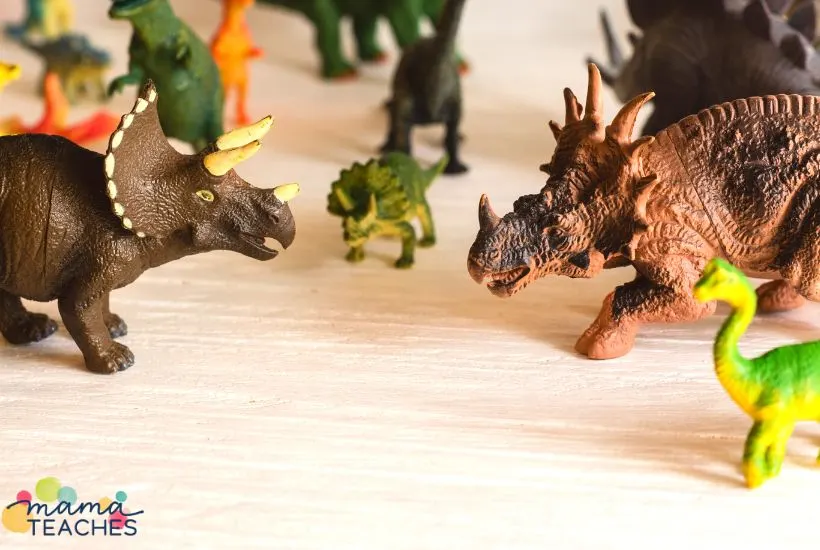
5. Dinosaurs Laid Eggs
A dinosaur was a reptile. Like other reptiles, they laid eggs.
Paleontologists have found fossilized dinosaur eggs, many grouped in the dinosaur nest.
The first fossilized dinosaur eggs were found in 1923 in the Flaming Cliffs of Mongolia.
Some well-developed eggs even contain the embryo of baby dinosaurs. If you crack them open, you can see the bones of the baby dinosaur!
YOU MAY LIKE: EARLY READER: MY BOOK OF DINOSAURS
6. The Oviraptor Got a Bad Rap–and a Bad Name
Oviraptor means “egg thief.” The name could not be farther from the truth.
The misunderstanding happened when the first Oviraptor skeleton was discovered.
In the 1920s, paleontologists encountered a complicated fossilized scene in Mongolia.
They found a nest of large eggs belonging to the plant-eating Protoceratops (an adult Protoceratops weighed 400 pounds).
Nearby lay the skeleton of a small, 70-pound meat-eater.
The team assumed the tiny carnivore must have been killed trying to steal and eat the Protocertops eggs. They named it Oviraptor, the egg thief.
Many years later, paleontologists examined the same site and found another nest of eggs on top of the Protoceratops nest (built much later).
They brought the nest to the lab and scanned the eggs to reveal the skeletons inside.
Guess what? Those eggs were Oviraptor eggs!
It turns out the Oviraptor was not an egg thief; she was a good mother tending her own nest.
She was likely sitting on her nest when she died, in order to guard her eggs from a sandstorm.
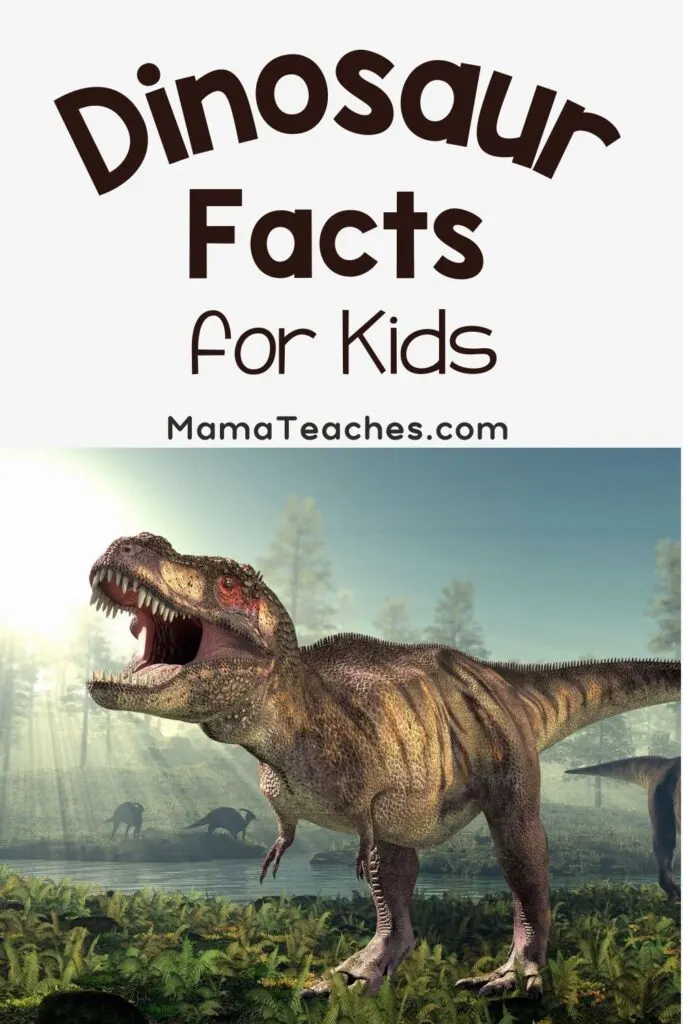
7. Dinosaur Skulls Have Extra Holes
If you look at a human skull, you will see a large bone with certain holes (mainly for the eye sockets, the nose, and the spinal column).
If a human skull is like a regular car, a dinosaur skull is like an open-top Jeep.
Since dinosaur skulls are so large (some are actually the size of a car!), they would be extremely heavy if they were solid bone.
Most dinosaur skulls have “windows” or large holes in the skull.
In addition to making the skull lighter, scientists believe these skull windows helped the brain stay cool.
8. Dinosaurs Ate a Bus-Load of Food
Some dinosaurs were enormous. The Argentinosaurus could weigh over 100 tons!
This plant-eating dinosaur had to eat a lot of food to sustain itself.
Research suggests the Argentinosaurus had to eat 1200 pounds of leaves and plants a day in order to maintain its weight.
Imagine a 40-ft school bus packed with leaves. That’s the amount of food an Argentinosaurus ate each day!
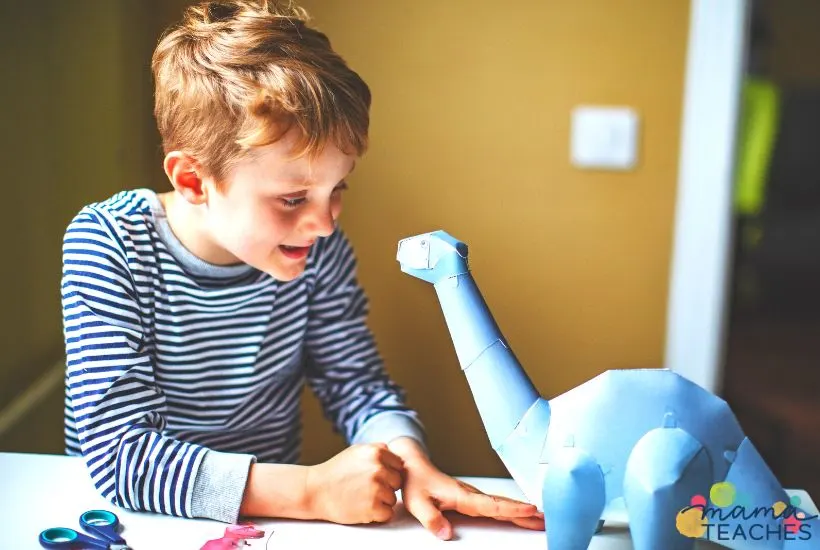
9. The First Iguanodon Skeleton Had a Thumb on Its Nose
Imagine the job of the first paleontologists.
They unearth a pile of fossilized bones. These may be all the bones of the mysterious creature, some of the creature’s bones, or a mix of bones from various creatures.
Paleontologists have never seen this animal; they have no mental picture.
They attempt to assemble the bones into a skeleton with zero objects in mind.
It’s like trying to complete a puzzle that may or may not have all the pieces. It may even have pieces from a different puzzle mixed in!
As you can imagine, mistakes were common!
One of the most amusing mistakes involved the first Iguanodon. We now know the Iguanodon has four fingers and a sharp claw in the “thumb” position.
When the first Iguanodon was assembled, paleontologists guessed the claw attached to the dinosaur’s nose!
How long did it take to realize this was a mistake? 40 years!
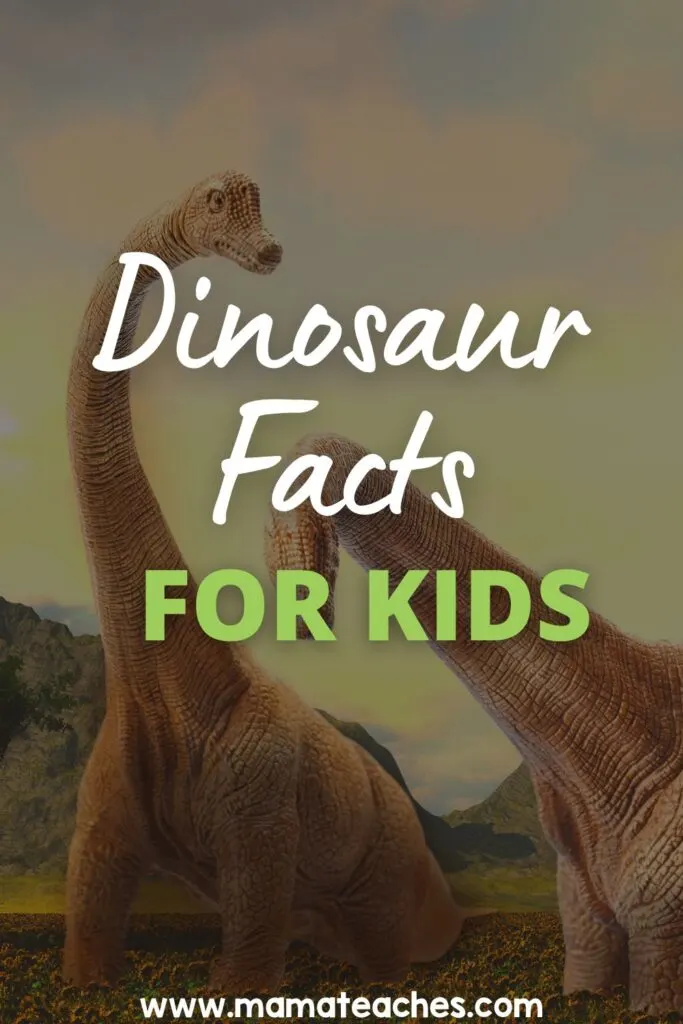
10. Pterosaurs Were Furry Flying Dinosaurs
Okay, technically, pterosaurs are not dinosaurs because a dinosaur, by definition, is a descendant of the sauropods (like Brontosaurus) or ornithopods (like Iguanodon).
Pterosaurs are dinosaur relatives. They could fly!
They ranged in size from 10 inches for a wingspan all the way up to 36 feet. That’s truly terrifying!
Although pterosaurs were reptiles that laid eggs, they had some characteristics that resembled mammal.
Their wings were made of thin skin (like the bat).
They had hair-like filaments that covered their bodies called pycnofibers.
Some of the pycnofibers resembled hair (they were small tubes). Others looked more like soft, silky feathers (like fluffy goose down).
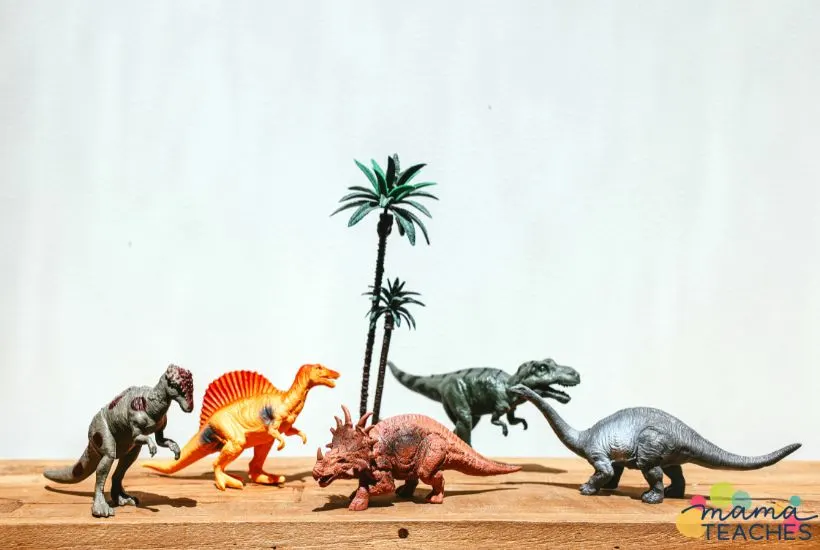
Amazing Dinosaur Facts for Kids
Enormous dinosaurs may no longer roam the earth, but they continue to fascinate young and old alike.
Delve deep into dinosaur trivia with these dinosaur facts for kids.
